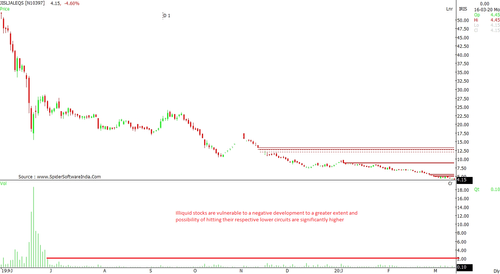Five Ways To Manage Market Volatility
- 4m•
- 1,273•
- 24 Apr 2023
India VIX, a measure of volatility and investors’ perception about the risk of sharp swings based on options prices, rose to its highest level since the 2008 global financial crisis (GFC) last week, as fear gripped markets worldwide after COVID-19 was declared a ‘pandemic’.
VIX is meant to indicate investors’ perception of the annual market volatility over the next 30 calendar days. The higher the value, the higher is the expected volatility and vice versa. VIX touched its historical peak of 85.13 on November 17, 2008, in the aftermath of the collapse of Lehman Brothers. In the past five years, it has stayed below 30.
Here are five ways with which you can manage volatility during uncertain times.
1. Avoid Illiquid Stocks:
Stock with low volumes, especially from mid-cap and small-cap basket must be totally avoided. Illiquid stocks are vulnerable to a negative developments to a greater extent as compared to their large-cap peers. The possibility of hitting their respective lower circuit is also significantly higher. In some cases, the spread bid of ‘Buy and Sell’ is wide, which can result in a panic sell-off. Even placing a stop-loss order does not work here as a panic sell-off can see the levels get breached quite fast.

2. Wait For Volume Confirmation:
For a stock to enter in a buy spectrum, trading volumes play a crucial role. That’s said, the structure of the volumes needs to be evaluated clearly. Sometimes, a morning’s volume may trigger an upside, which can change course and later the stock witnesses selling pressure. To avoid a false breakout, one needs to gauge the volumes for three – four sessions for an immediate trend. Weekly volumes structure assists in developing strategies for the medium-term. A rise in volume with the stock closing with higher highs suggests a change in trend.
3. Stop Chasing Stocks For A Low Price:
Never try to catch a falling knife. Supports and resistances only provide assistance in reversal. However, this may not always hold true. When a stock breaks its first support, it falls to the next support level – and this scenario may continue. Secondly, a gap-down or gap-up constantly shift the spectrum of support and resistance to new levels, which may be hard to keep a track of for a lay investor.
4. Focus On Stocks Hitting 52-Weeks Highs Or Lifetime Highs:
Stocks hitting 52-weeks high, or lifetime high, seem to possess strong underlying strength. That said, even these stocks may see selling pressure, albeit the volatility could be low. Combined with moving averages and technical indicators, the favorable upside may be gauged. These stocks may indicate a rise in volatility only when they gap down or close negative with strong volumes.
5. Avoid Stocks With 7 Per Cent Swing In A Session:
Swing trading is purely a speculative trading strategy in markets where a stock is held for between one and several days in an expectation to profit from price changes or 'swings'. Such trades are usually done in stocks that are near a key support or resistance levels. Traders look for several different types of patterns designed to predict breakouts or breakdowns, such as triangles, channels, Wolfe Waves, Fibonacci levels, Gann levels, and others. As a thumb-rule, stocks with large intra-day swings do not show a larger trend. Those with over 7 per cent even fail to show depth. Until the stock shows stability for two – three sessions after a wild swing, do not buy.





